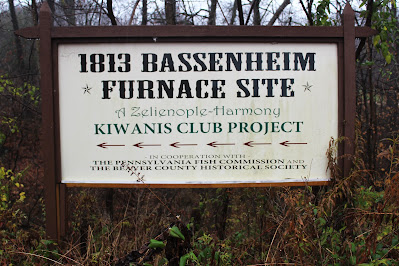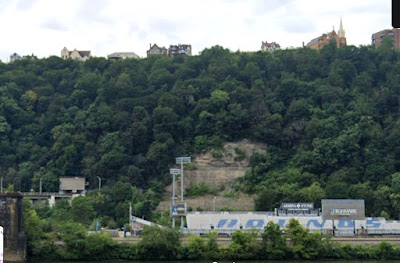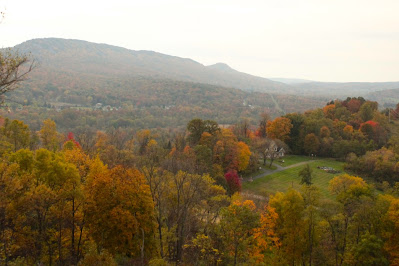A yearly thing Ann Marie and I do is to take a trip down into the Strip District during the week before Christmas. We do some shopping, stop at a few of our favorite stores and then, after getting a couple cookies at Enrico Biscotti, we go over to La Prima Espresso for some good coffee and then sit outside and people watch. Most of the time it is crowded, and people are happy and courteous. People are saying Merry Christmas to strangers and everyone is smiling. We enjoy watching the families that bring their children down to help them shop, the kids eyes wide open, trying to take it all in. These are memories being made! It is a great way to get into the Christmas spirit.
We went down on Thursday, three days before Christmas Eve. With our steaming cups of java sitting in front of us and crumbs gathering on the table, we talked, watched and enjoyed the morning. The scenery was continuously changing. While we were there, a young man came up and asked about my camera. (I was shooting film that day.) He was a “film shooter” also and we spent a few minutes discussing cameras before wishing each other a happy holiday and parting ways. After the Strip, we went to visit our favorite bookstore, City Books and spent a little time with Arlan, the owner.
From there, we headed north. Beyond Zelienople we stopped to find a couple caches and to take some photos of the scenery. Further north, we came into the outskirts of Mercer. The snow coverage was more prevalent here as compared to Pittsburgh where everything had melted. We turned towards the west and eventually ended up on the road we were searching for. We pulled over beside a dirt drive with signs all over the place warning about trespassing and that we were on camera.
Despite the signs, we got out and walked up and down the road, peering into the woods. A small pile of what looked like dirt and trees looked like what we were searching for, another iron furnace. The Iron City Furnace!
I guess the cameras worked because the owner of the land stopped by. When we told him what we were doing he was kind enough to allow us to visit the pile, and what was left of the furnace. The owner and I shared our knowledge of it, unfortunately neither of us knew very much. He was interested in learning more about it. We exchanged contact info and wished each other Merry Christmas. He was definitely a nice guy!
The furnace has mostly fallen in on itself. From the road you wouldn't even realize what it was, in fact, when walking around it, it was tough to picture what it once was. Looking closer, there were a few places where rows of stones could be seen. Forcing my way to the top, through the sharp and thorny branches I was able to glimpse the bricks forming the round edge of the inner bosh. A small, dark opening on the side was the top of one of the furnace arches, allowing a glimpse down into the furnace. This was where the best-looking stones were, still nice and straight and all in line. The area in front of it was wet and swampy.
My hands and legs will be complaining for the next couple days. I got at least 3 thorns stuck in me. Blood was flowing! All around the ruins were those thorny trees and bushes which seem to proliferate around iron furnaces; Honey Locust, Japanese Bayberry and Roses. Anyone who has hunted or hiked in the Pennsylvania woods is familiar with these plants. The Locust thorns go straight in and then break off, usually getting infected a day later. While driving home I kept finding new thorns that were stuck in my pants!
After taking some pictures we returned to the main roads and searched for a restaurant for some dinner. A nice Mexican place in Zelienople fit the bill and then it was back towards home.
One more geocache waited for us and Ann Marie found it almost as soon as she got out of the car. It was hidden in a golf ball! Our first find was hidden inside a rock and the last inside a golf ball! Nice hides! Earlier, while we were looking for another cache, the car was sitting alongside the road with the flashers on. A truck pulled over and a gentleman got out, looking a lot like Santa, complete with a white beard. He asked us if we needed any help. After Ann Marie told him what we were doing, he wished us both a Merry Christmas and continued on his way! A little bit of country caring! There were two other guys who watched us search for a different cache from a parking lot across the street. They must’ve known where it was because when we finally found it, they tooted their horns and gave us a “thumbs up”. Yes, it seemed like everyone was in a good mood!
We returned home 8 hours after we left, and then relaxed by playing a game of Scrabble. It was a high scoring game for both of us, our final scores within a couple points of each other.
Later while doing some research on the furnace, I found out that there was another Iron City Furnace close to this one, a bit further north. We will visit it on a future date. I also discovered that I had been to this furnace before, in 2009, surprisingly enough, to find a geocache. The cache is no longer active or there.
You might wonder why we search for these piles of rock. It is because they are our history; they are part of our past, part of the way we advanced our civilization. It is exciting, to us at least, to see these rocks and stones which were piled in these sites a hundred or more years ago. It is another hobby and, we have to do something to keep us off the street corners!
It was another perfect day, we met lots of nice people, it was evident that the holidays were working their magic! It was truly another happy Holiday Jaunt.

.jpg)




















































